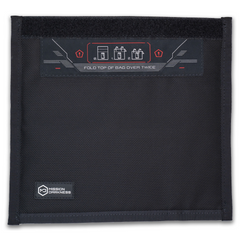As we become increasingly reliant on personal devices for everyday tasks, the risk of hacking and cyber-attacks has never been more significant. From keyfobs and credit cards to smart home devices and cell phones, our lives are deeply intertwined with technology, making them potential targets for malicious hackers. In this article, we will delve into the current state of personal device hacking, exploring how hackers exploit vulnerabilities in keyfobs, credit cards, smart home devices, and cell phones. We will also discuss effective ways to protect ourselves, including the use of faraday bags.
Keyfob Vulnerabilities and Signal Amplification
Keyfobs have become a popular means of secure entry and ignition systems for vehicles. However, recent news reports have highlighted vulnerabilities in keyfob technology, enabling thieves to amplify the keyfob signal remotely and gain unauthorized access to the targeted vehicle. One such method, known as "relay attack," involves capturing and amplifying the keyfob's signal from a distance, fooling the car into thinking the key is in proximity.
According to a report by ABC News in 2022, car thefts using this technique have risen dramatically, with hackers targeting various car models equipped with keyless entry systems. Fortunately, there are ways to protect against such attacks, and one of the most effective methods is using a faraday bag.
A faraday bag, also known as a signal-blocking pouch, is a protective enclosure made from conductive materials that block electromagnetic signals. By placing the keyfob inside the faraday bag, the signal is effectively shielded, preventing hackers from amplifying it remotely. These bags provide a simple yet effective solution to protect against relay attacks and maintain the security of your vehicle.
Credit Card Vulnerabilities and Chip Isolation
Credit cards have also faced their fair share of hacking threats. Traditional magnetic stripe cards were susceptible to skimming attacks, where criminals would use devices to steal card information at point-of-sale terminals. To counter this, credit card companies transitioned to EMV chip cards, adding a new layer of security. However, this hasn't eliminated all vulnerabilities.
Recent research by cybersecurity experts revealed that contactless credit cards, which use radio frequency identification (RFID) technology, are vulnerable to data theft through RFID skimming. Hackers equipped with handheld RFID readers can potentially capture card information remotely without any physical contact with the card.
The practice of "chip isolation" has emerged as a preventive measure to safeguard against RFID skimming. By using an RFID-blocking sleeve or wallet, or better yet, a higher-shielding faraday bag, cardholders can create a barrier that prevents unauthorized access to the credit card's sensitive data.
Smart Home Device Vulnerabilities and Secure Practices
The rapid proliferation of smart home devices has brought convenience but also raised concerns over security. In a recent incident covered by Forbes, a hacker gained unauthorized access to a smart home's security camera system. The hacker could view and control the cameras, leading to a serious breach of privacy for the homeowners.
To secure your smart home devices, always change default passwords, keep firmware updated, and use strong, unique passwords for each device. Additionally, ensure your home Wi-Fi network is password-protected and encrypted.
GPS Location Tracking and Remote Phone Access Protections
Cell phones are perhaps the most ubiquitous personal devices today, but they are not immune to hacking. Malware and malicious apps can compromise a phone's security, leading to data breaches and unauthorized access to sensitive information. Additionally, hackers can exploit vulnerabilities in phone software to gain remote access to the camera, microphone, and other personal data, leading to severe invasions of privacy.
In a recent incident reported by The Guardian in 2023, a new form of ransomware targeted smartphones, gaining control of the device's camera and microphone. Hackers threatened to leak sensitive footage and recordings unless a ransom was paid. Instances like these emphasize the need to protect our phones from unauthorized access.
Similar to keyfobs, faraday bags also serve as an effective safeguard for cell phones. Placing your phone inside a faraday bag when you want to ensure absolute privacy and security can prevent GPS tracking, remote camera/microphone access, and data exfiltration. These bags create an impervious barrier that blocks all incoming and outgoing electromagnetic signals, rendering the phone completely isolated from external communication. These bags come in various sizes and can be used for protecting additional mobile devices and communicable electronics from hacking, tracking, and spying.
For additional security measures to protect your cell phone, install reputable antivirus and anti-malware apps. Regularly update your phone's operating system and apps to patch any security vulnerabilities. Be cautious when downloading apps from unknown sources and grant app permissions judiciously.
Safeguarding Your Privacy in the Digital World
As personal devices become integral to our daily lives, the threat of hacking and cyber-attacks continues to grow. Understanding the vulnerabilities of keyfobs, credit cards, smart home devices, and cell phones is crucial in mitigating potential risks. By implementing proactive security measures such as using faraday bags, credit card chip isolation, and employing secure practices for smart home devices and cell phones, we can better protect our privacy in an increasingly digital world. Stay informed, stay vigilant, and take the necessary steps to safeguard your personal devices from potential hackers and cyber threats.





